This is the Benito Quinquela Martín Museum of Fine Arts in La Boca. One afternoon, while walking through the La Boca neighborhood in the city of Buenos Aires, I visited the museum. Benito was a great Argentine painter who painted the port of Buenos Aires with the hustle and bustle of the workers. His works often depict the activity and vigor of daily life in the ports. His main technique was the use of the spatula instead of the traditional brush, which allowed him to apply the paint in a thick and textured way. And color, lots of color.
Este es el Museo de Bellas Artes de La Boca Benito Quinquela Martín. Una tarde, paseando por el Barrio de La Boca en la ciudad de Buenos Aires, visité el museo. Benito fue un gran pintor argentino que pintaba el puerto de Buenos Aires con el trajinar de los trabajadores. Sus obras a menudo representan la actividad y el vigor de la vida diaria en los puertos. Su técnica principal era el uso de la espátula en lugar del pincel tradicional, lo que le permitía aplicar la pintura de manera gruesa y texturizada. Y color, mucho color.
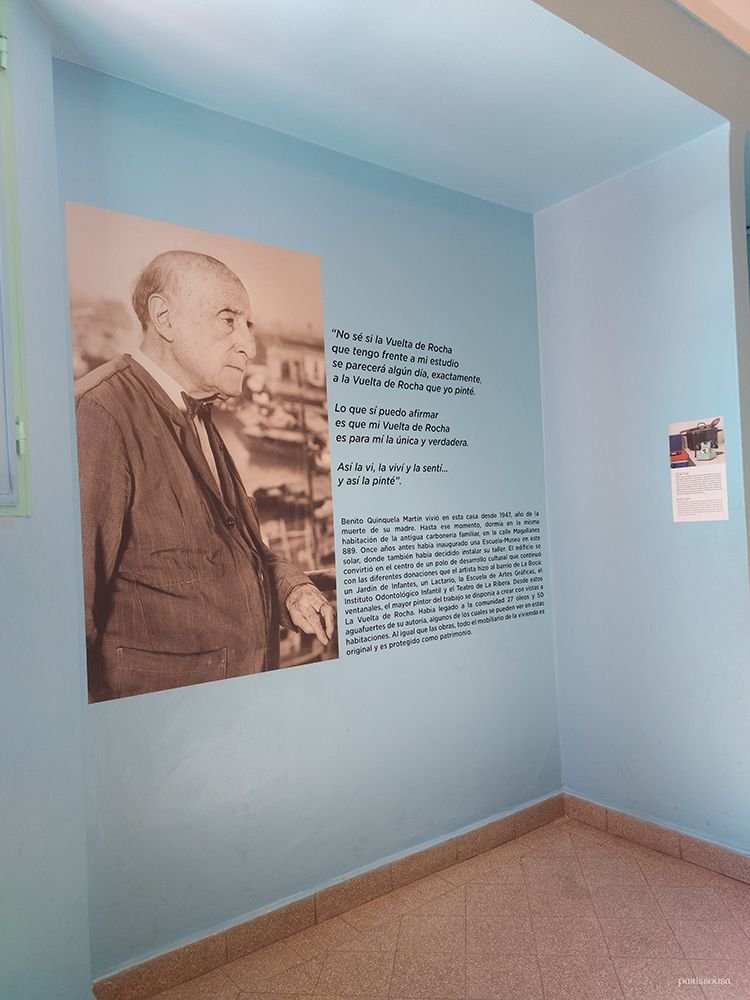
Benito nació en Buenos Aires en 1890, pero fue abandonado al nacer. Recién a los 6 años fue adoptado por un matrimonio y pasó a vivir con ellos en el Barrio de La Boca. Podemos decir que ahí comenzó realmente su vida, como si volviera a nacer. Pocos años después, comenzó a tomar clases de pintura mientras trabajaba con su padre. Con el tiempo, montó su taller de pintura y empezó a impartir clases. Para la década del 20, ya exponía en importantes ciudades como Madrid, París y Nueva York, consolidándose como un destacado pintor argentino.
Benito was born in Buenos Aires in 1890, but was abandoned at birth. He was only adopted by a married couple at the age of 6 and went to live with them in the La Boca neighborhood. We can say that his life really began there, as if he were reborn. A few years later, he began taking painting classes while working with his father. Over time, he set up his own painting studio and began teaching classes. By the 1920s, he was already exhibiting in important cities such as Madrid, Paris and New York, establishing himself as a prominent Argentine painter.
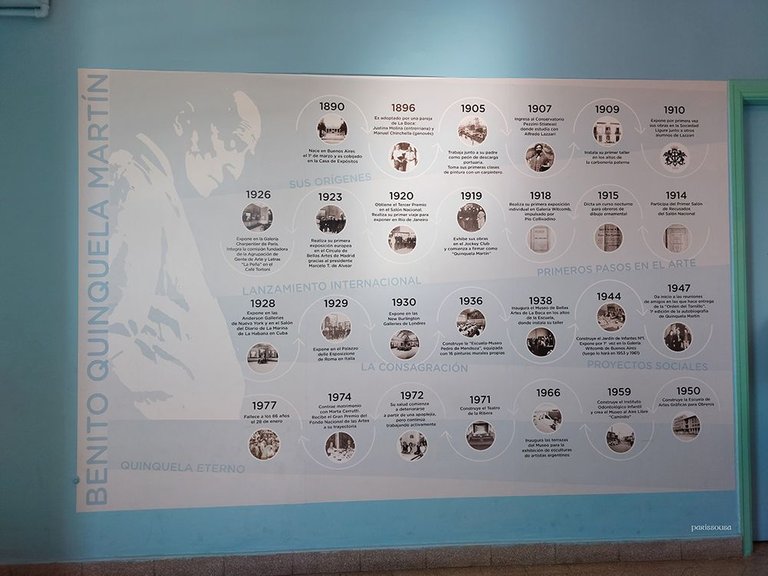
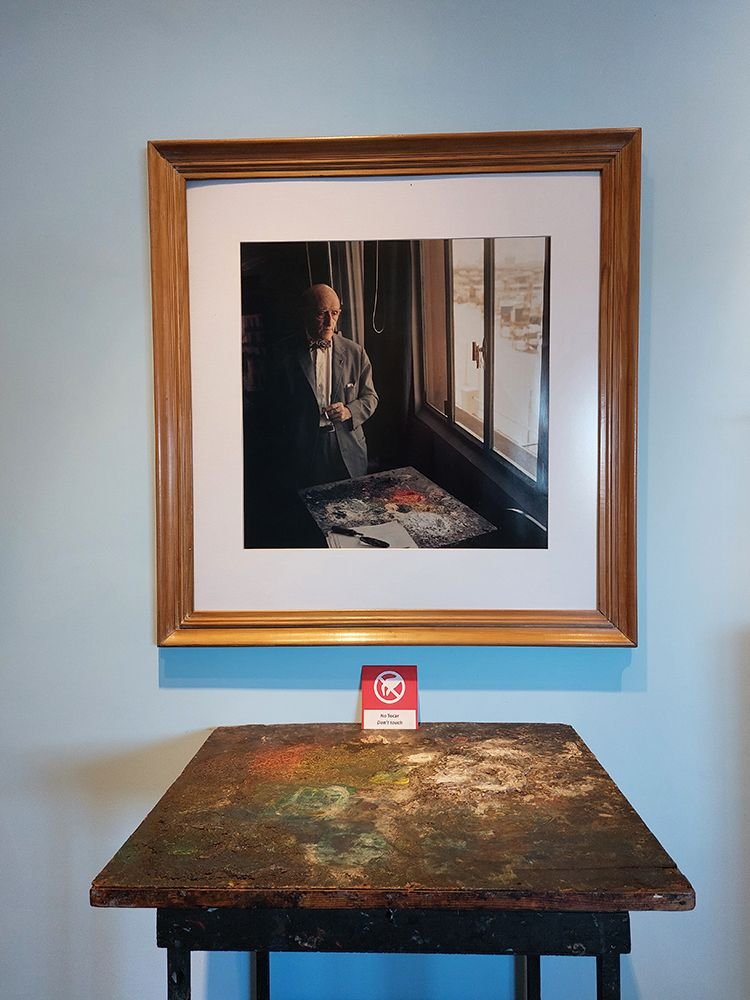
Working Method: Quinquela says that the first thing comes with the idea, which can come at any time. Then he makes a lot of notes. He thought about most of his paintings for months and painted them in just a few days. He says that he is not a copyist of reality, but an interpreter. In this display case we can see his work elements: his paints, his oils, his charcoals, his brushes and his spatula. These objects allow us to better understand his creative process and the dedication he put into each of his works.
Metodología de trabajo: Quinquela cuenta que lo primero es la idea, que puede surgir en cualquier momento. Luego, hace muchos apuntes. La mayoría de sus cuadros los pensó durante meses y los pintó en pocos días. Dice que no es un copista de la realidad, sino un intérprete. En esta vitrina vemos sus elementos de trabajo: sus pinturas, sus óleos, sus carbonillas, sus pinceles y su espátula. Estos objetos nos permiten entender mejor su proceso creativo y la dedicación que ponía en cada una de sus obras.
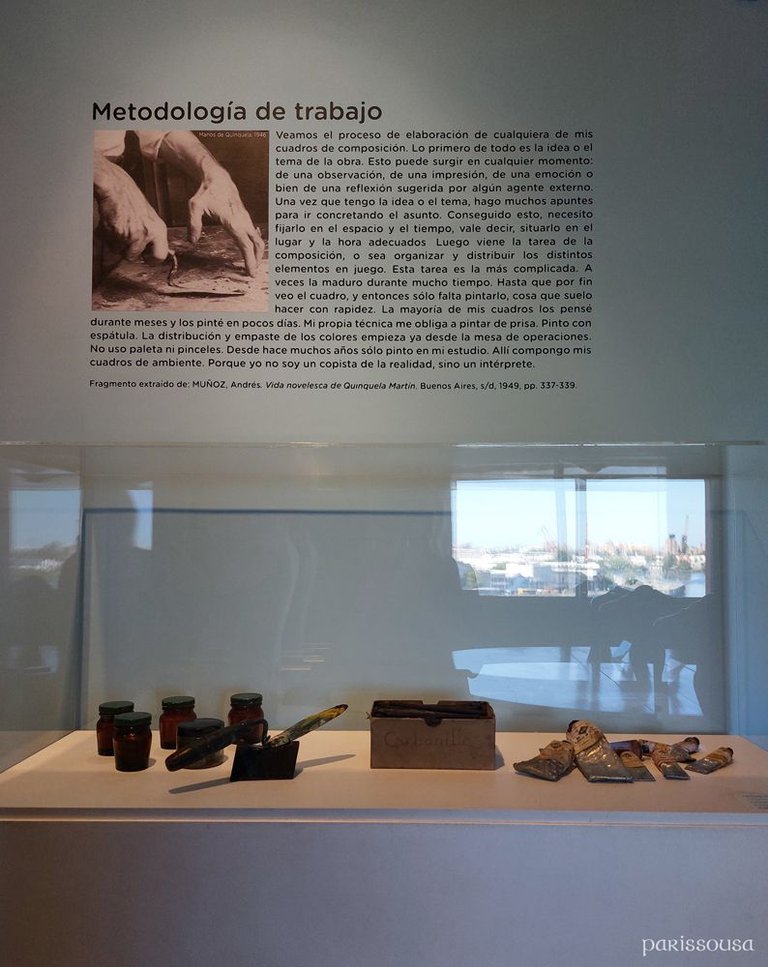
Walking through the house, we came across several objects that belonged to him. This is his etching press. Although he is known for his oil paintings, he also explored various techniques; one of them was etching. The museum has a large number of these etchings, which show his artistic skill and versatility.
Recorriendo la casa, nos encontramos con varios objetos que le pertenecieron. Esta es su prensa de grabado. Si bien es conocido por sus pinturas al óleo, también exploró diversas técnicas; una de ellas fue el grabado. El museo cuenta con una gran cantidad de esos grabados, que muestran su habilidad y versatilidad artística.
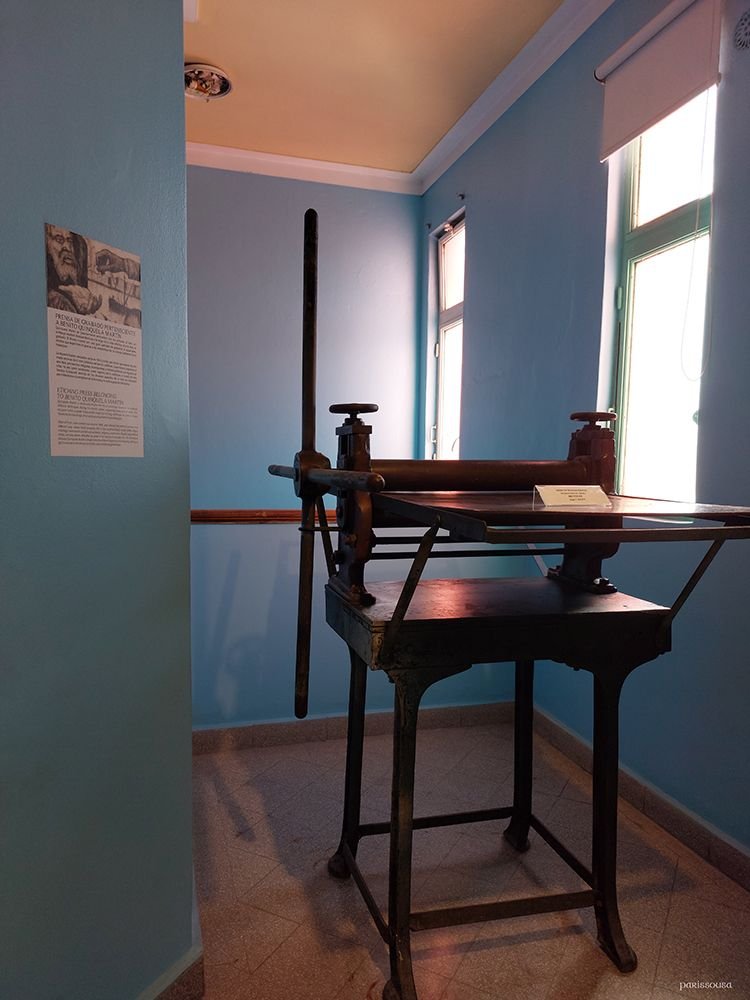
The furniture in the house is original and is on display in this museum.
El mobiliario de la vivienda es original y se expone en este museo.
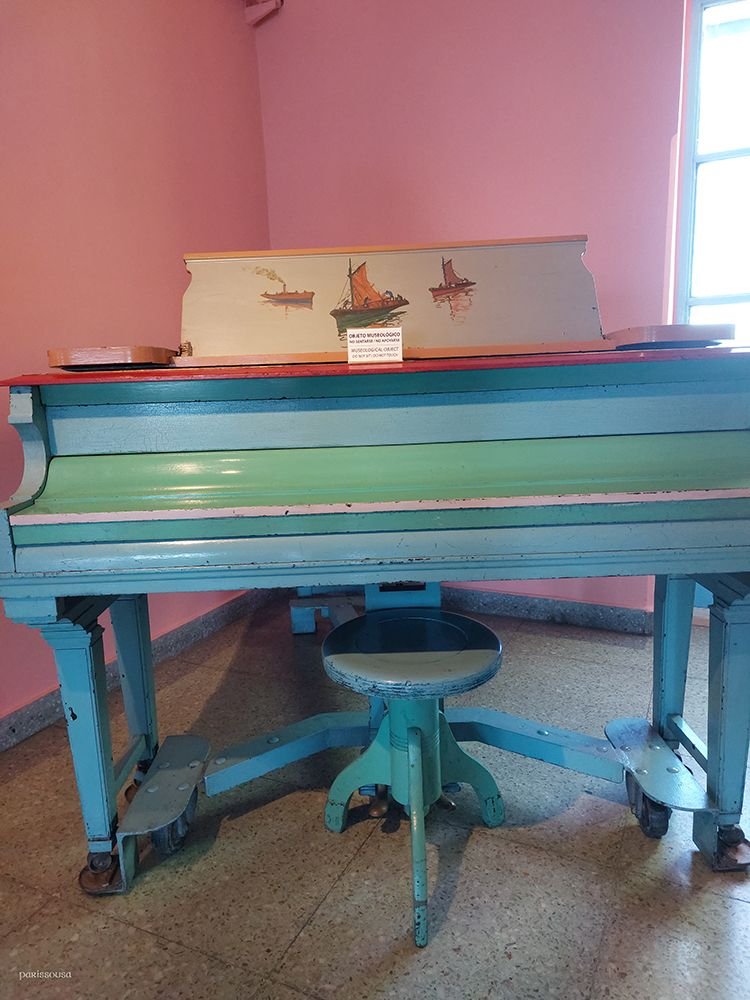
Without knowing him, I imagine that Benito had a very good sense of humour. I deduce this from the fact that he is the author of the phrase: “Every man who dreams is missing a screw.” And as if this were not enough, in 1948 he celebrated the first ceremony of the Order of the Screw, intended for those who cultivated truth, goodness and the beauty of the spirit, and who were considered “crazy” by the common people.
Sin conocerlo, me imagino que Benito tenía muy buen humor. Esto lo deduzco por ser el autor de semejante frase: “A todo hombre que sueña le falta un tornillo”. Y como si esto fuera poco, en 1948 celebró la primera ceremonia de la Orden del Tornillo, destinada a aquellos que cultivaban la verdad, el bien y la belleza del espíritu, y que el común de la gente consideraba “locos”.
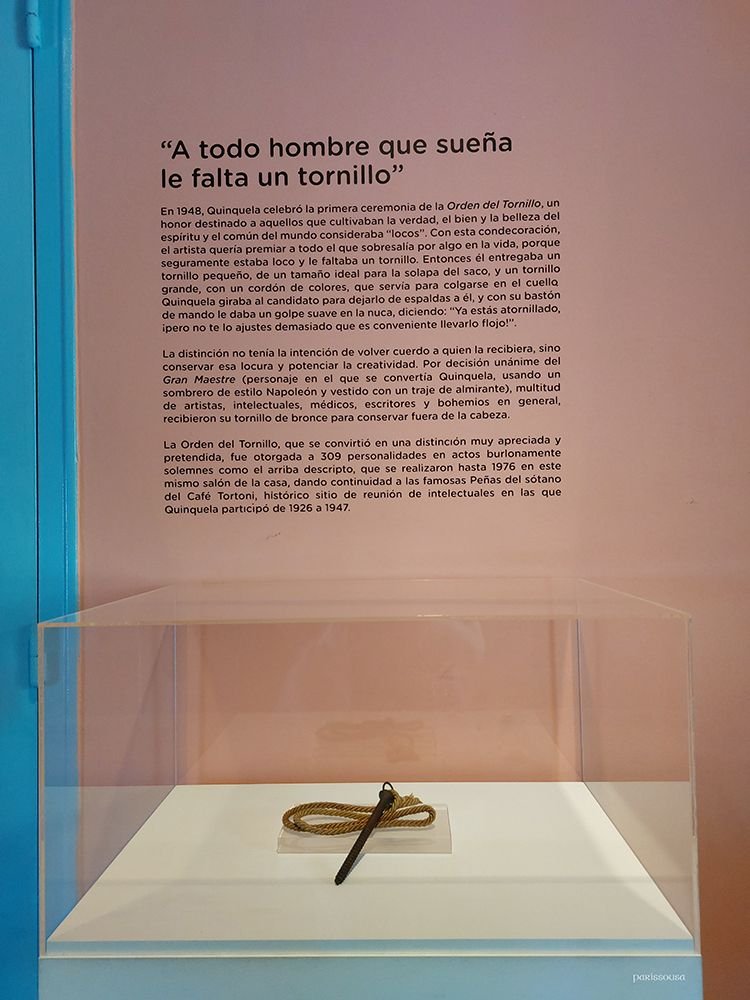
He lived in this house since 1947, the year of his mother's death. Until then, he slept in the same room in his parents' house. In this house, he had set up his workshop, which later became a cultural center in the La Boca neighborhood. This center housed a kindergarten, a nursery, a graphic arts school, a children's dental institute and the Rivera theater.
He bequeathed to the community 27 oil paintings and 50 engravings of his own, some of which can be seen in this museum.
Vivió en esta casa desde 1947, el año de la muerte de su madre. Hasta ese momento, dormía en la misma habitación de la casa de sus padres. En esta casa, había instalado su taller, que luego se convirtió en un centro cultural en el barrio de La Boca. Este centro albergaba un jardín de infantes, un lactario, una escuela de artes gráficas, un instituto odontológico infantil y el teatro de la Rivera.
Legó a la comunidad 27 óleos y 50 grabados de su autoría, algunos pueden verse en este museo.
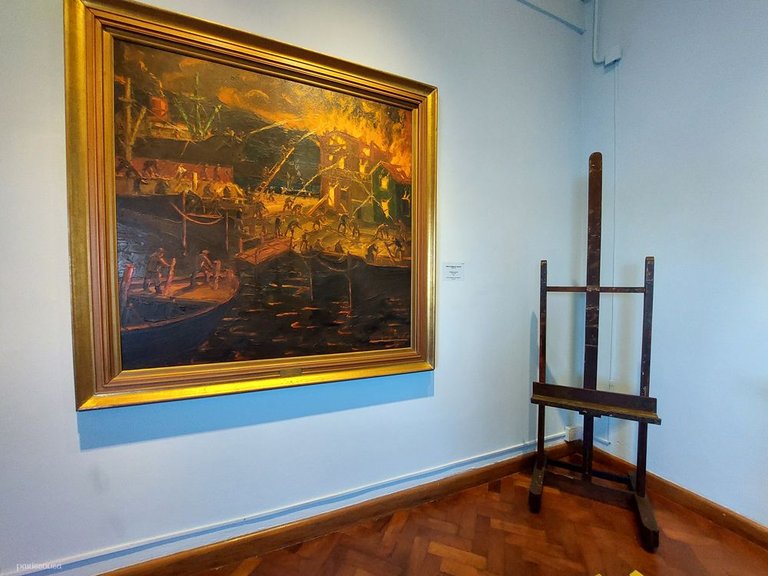
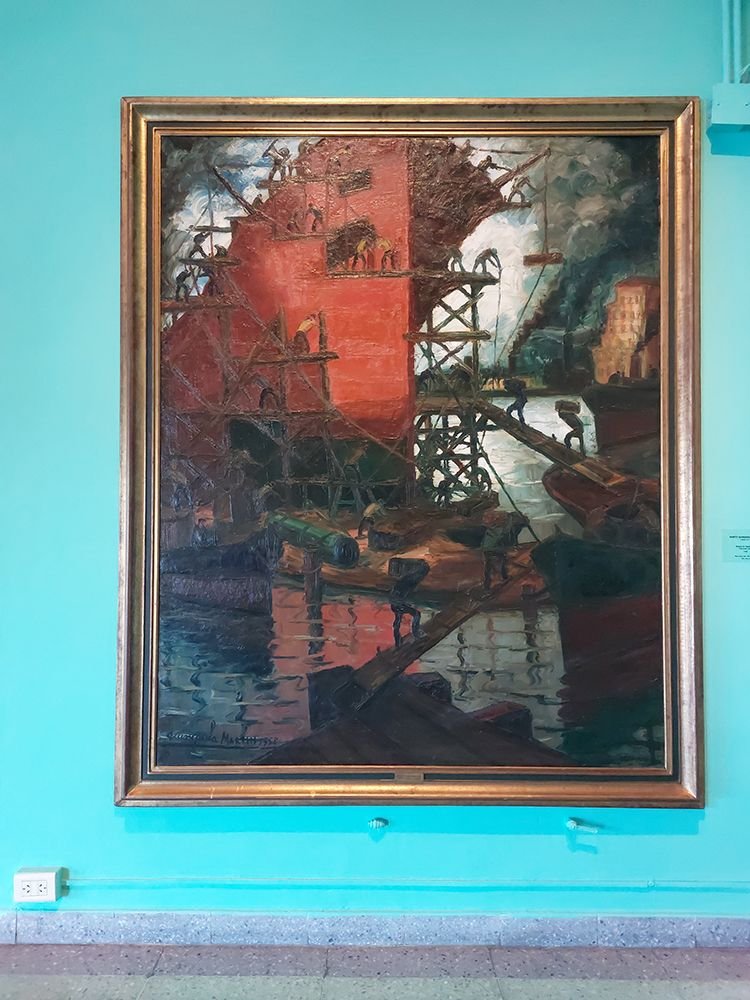
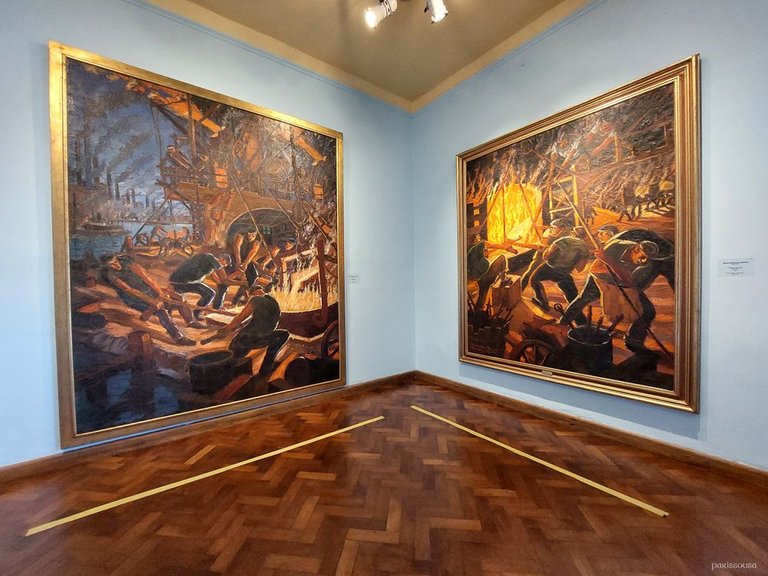
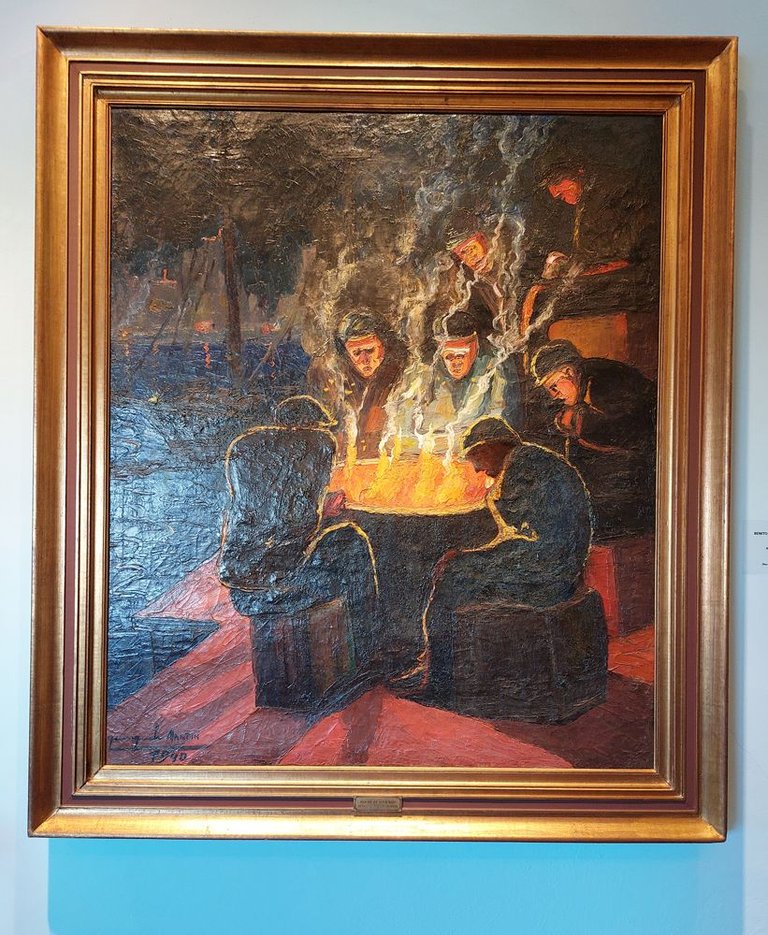
One room that really caught my attention was one called the Ship Cemetery. Quinquela said that one afternoon, during his travels around La Boca, he came across a ship cemetery. They gave it that name because old and useless ships ended up there. Each one of them had its own story, and Benito knew all those stories and captured them in his works. This place became a source of inspiration for many of his paintings, which reflect the decay and beauty of these forgotten ships.
Una sala que me llamó mucho la atención fue una que llevaba como nombre Cementerio de Barcos. Quinquela contaba que en sus recorridas por La Boca, una tarde llegó a un cementerio de barcos. Le daban ese nombre porque allí iban a parar los barcos viejos e inservibles. Cada uno de ellos tenía su historia, y Benito conocía todas esas historias y las plasmaba en sus obras. Este lugar se convirtió en una fuente de inspiración para muchas de sus pinturas, que reflejan la decadencia y la belleza de estos barcos olvidados.
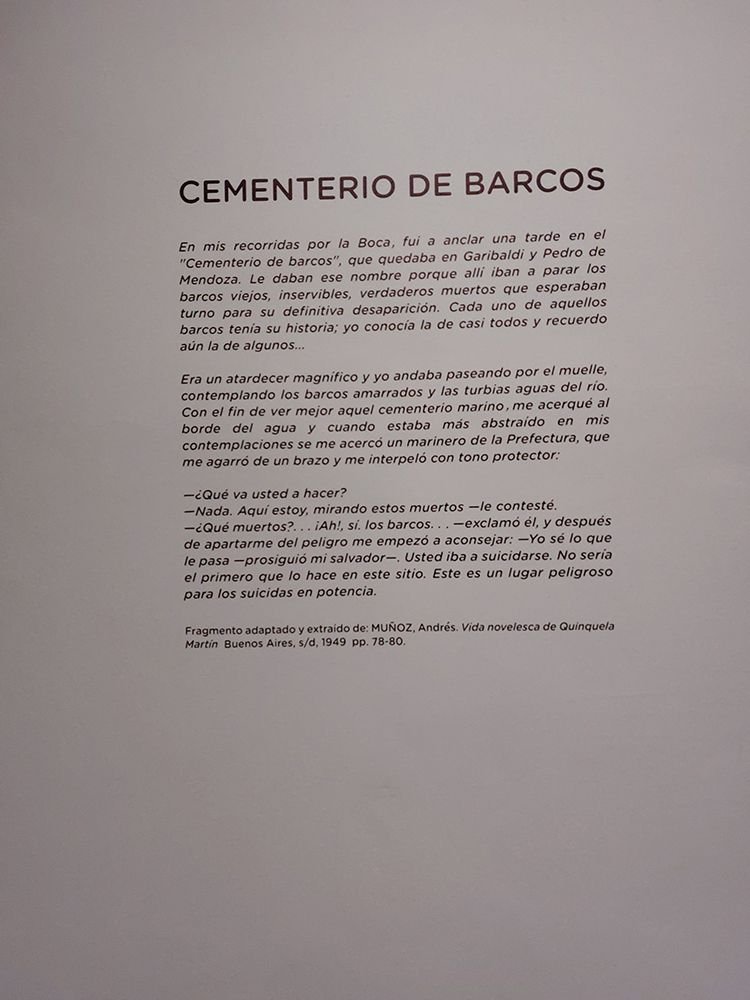
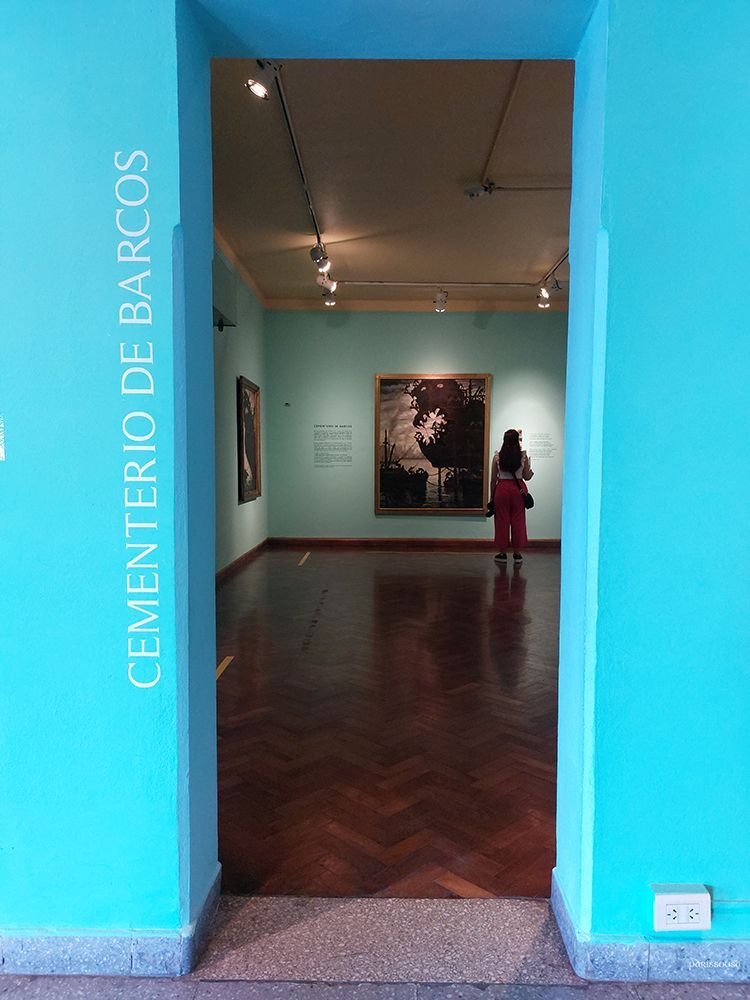
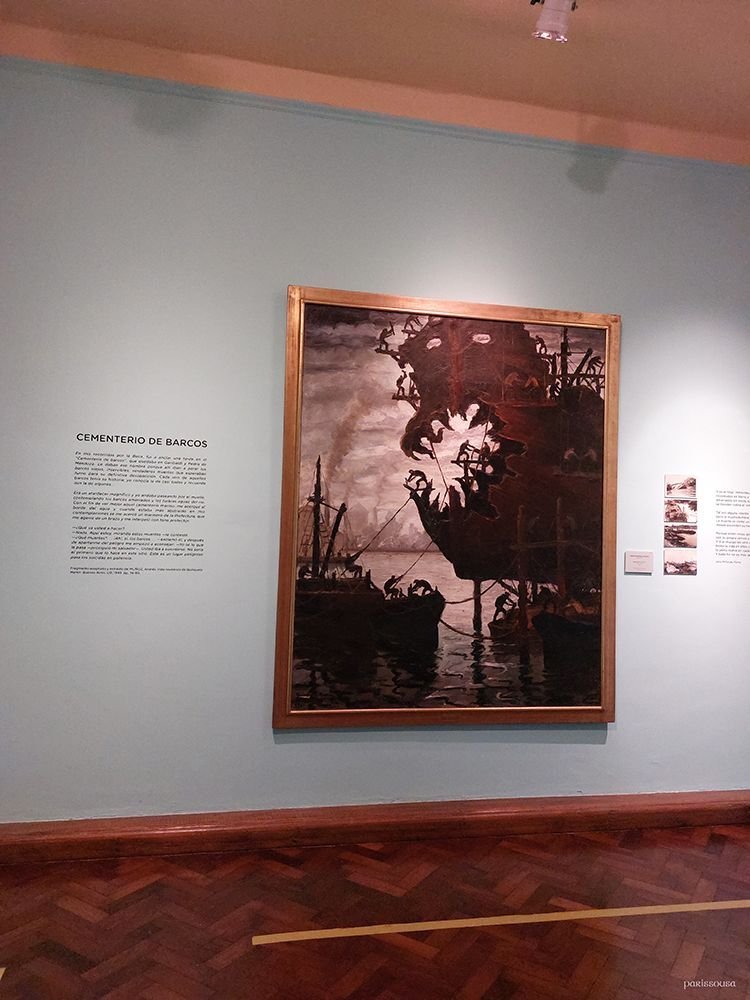
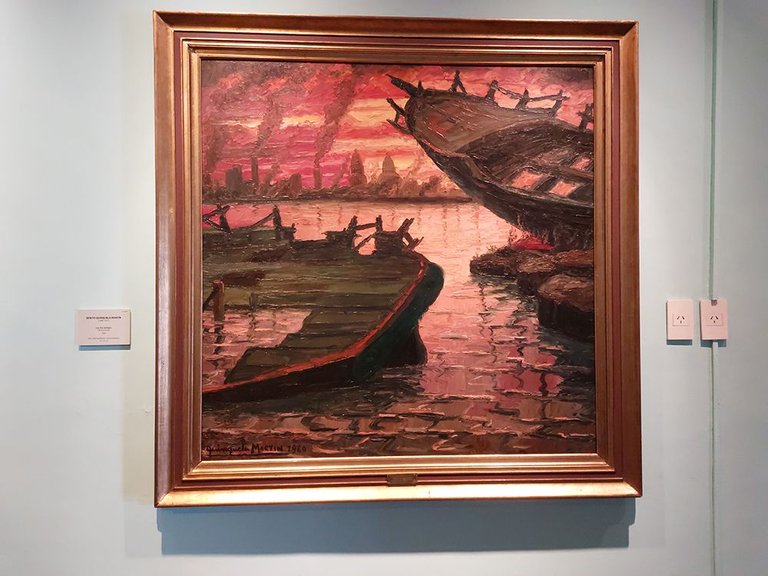
Workshop: In addition to preserving the most intimate rooms with their furniture, the workshop contains the tools that Benito used to work on his paintings. All of this allows us to have a more complete view of what his work environment was like and how he created his masterpieces.
Casa taller: Además de conservar las dependencias más íntimas con sus muebles, la casa taller posee los utensilios con los que Benito trabajaba en sus pinturas. Todo esto nos permite tener una visión más completa de cómo era su entorno de trabajo y cómo creaba sus obras maestras.
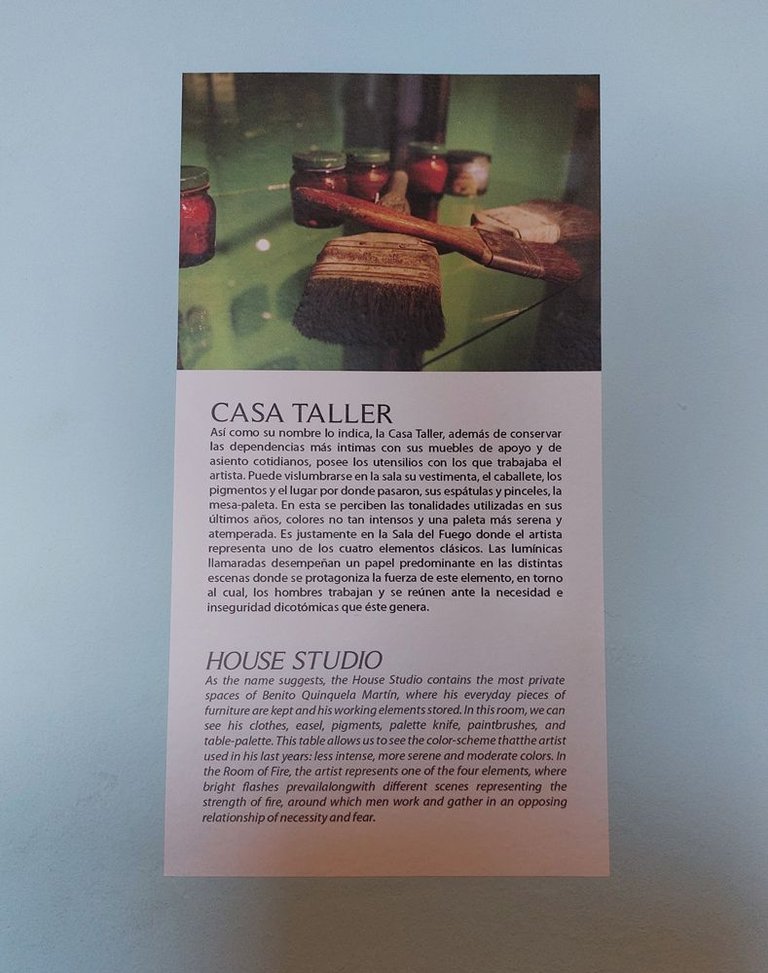
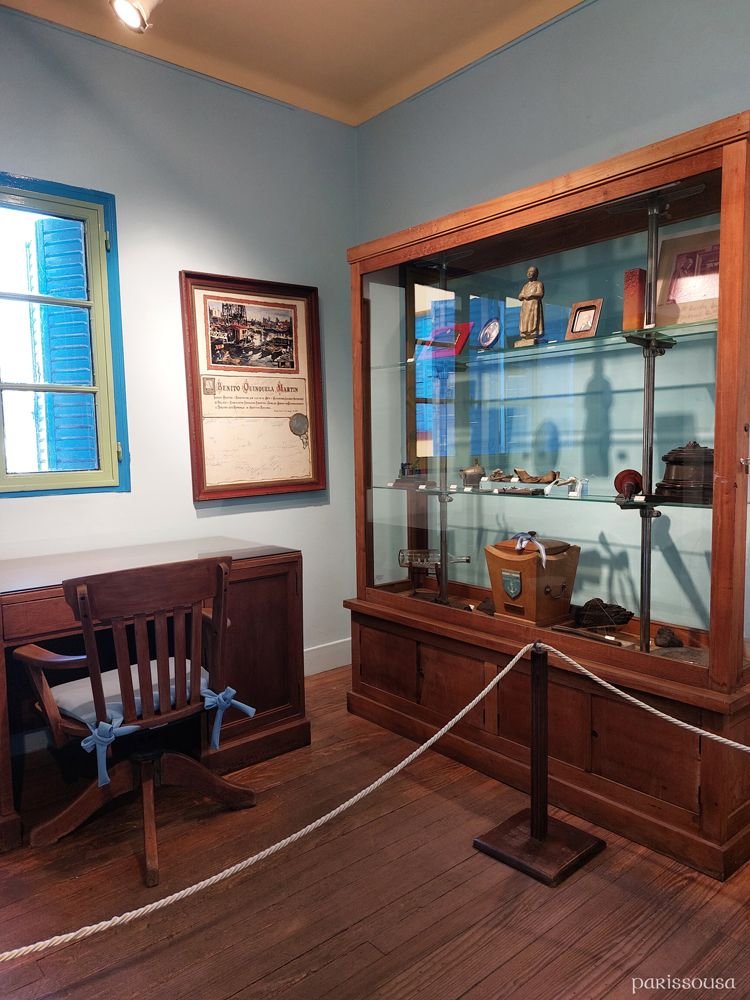
We can also visit his bedroom, his kitchen and his bathroom. There, we can appreciate how the artist combined the colors of the artifacts, adding color to the environment. Every corner of the house reflects his love for vibrant colors and his creativity, turning everyday spaces into works of art in their own right. In addition, these details allow us to better understand how art was present in all aspects of his life.
También podemos visitar su dormitorio, su cocina y su baño. Allí, podemos apreciar cómo el artista combinaba los colores de los artefactos, sumando colorido al ambiente. Cada rincón de la casa refleja su amor por los colores vibrantes y su creatividad, convirtiendo los espacios cotidianos en obras de arte por derecho propio. Además, estos detalles nos permiten comprender mejor cómo el arte estaba presente en todos los aspectos de su vida.
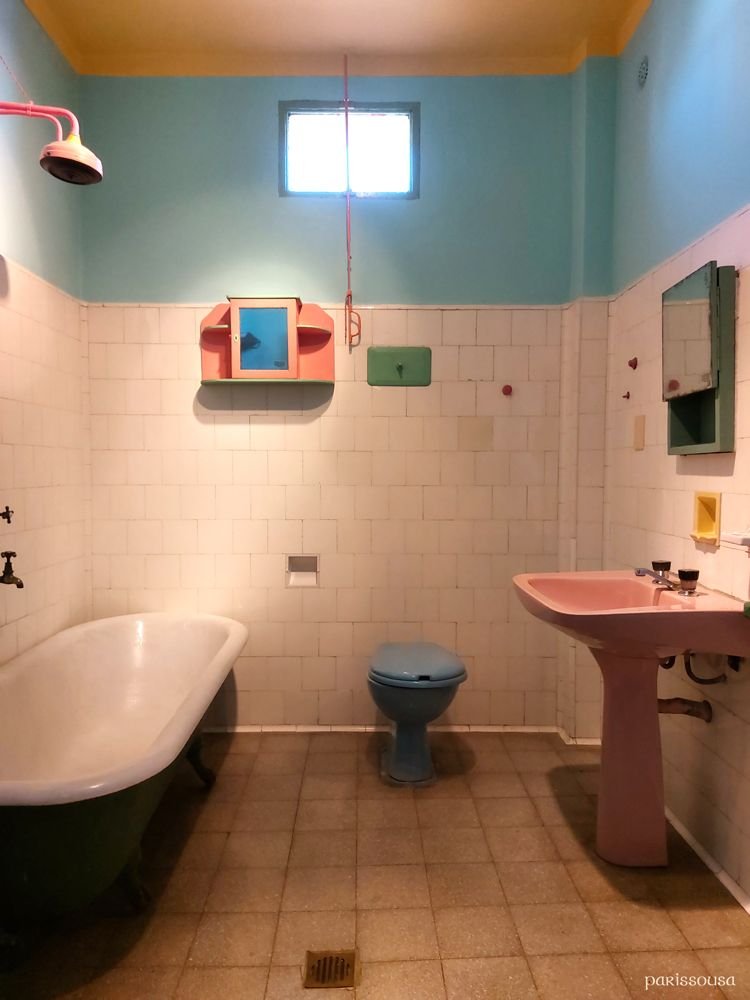
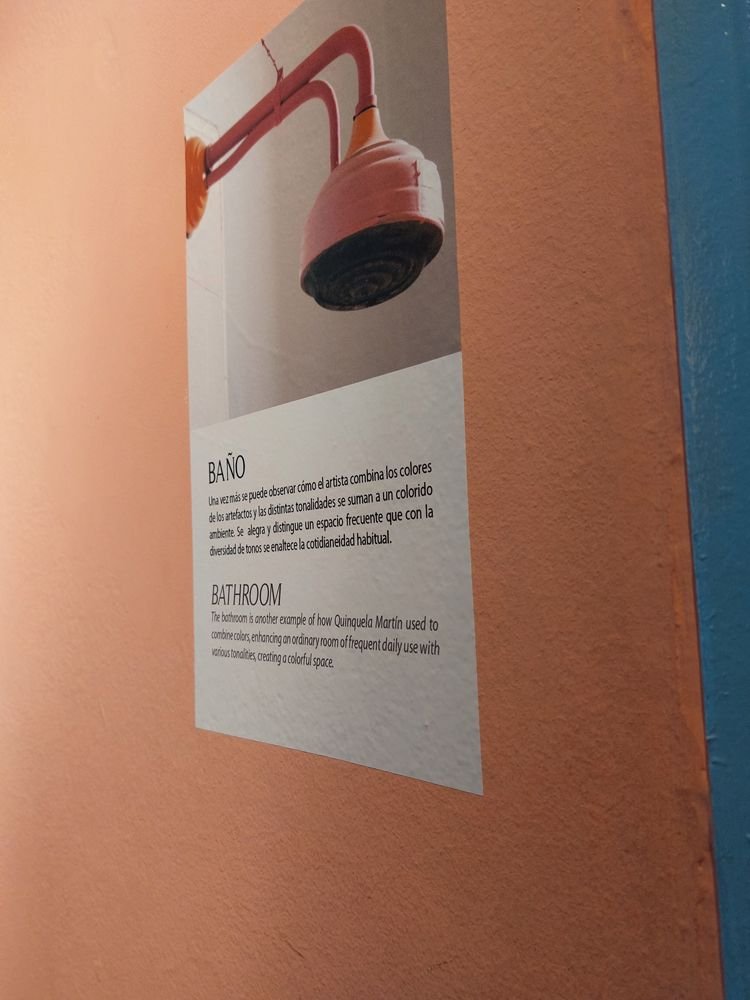
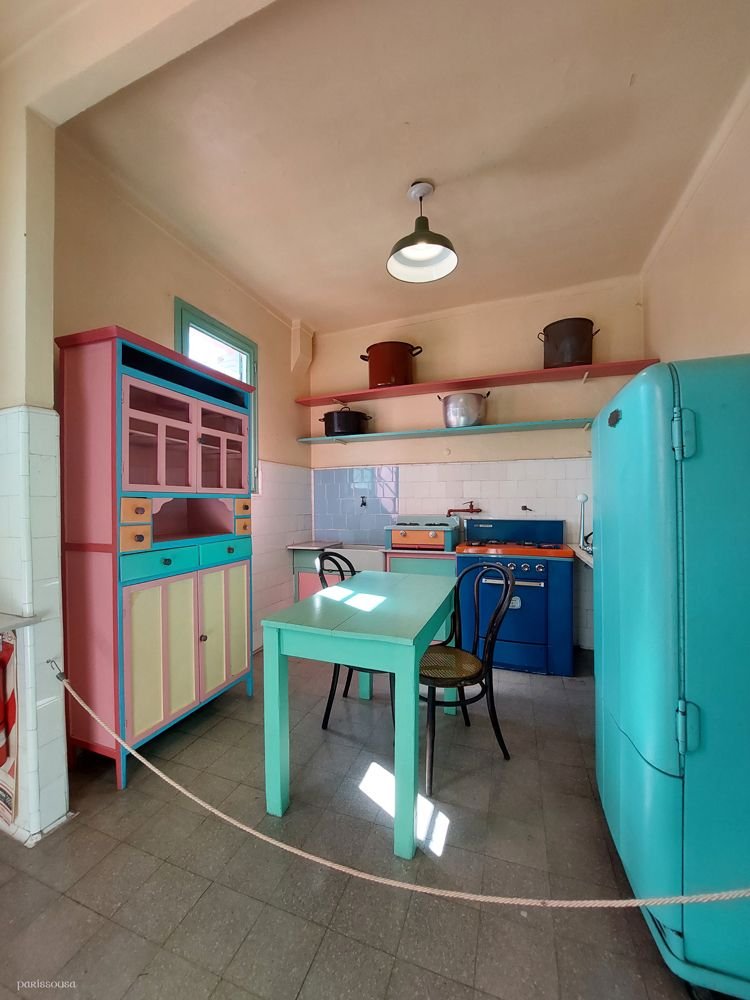
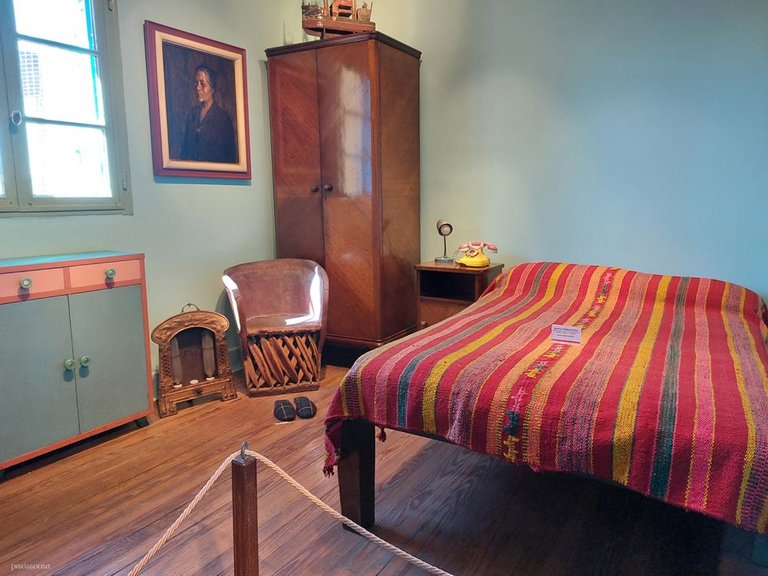
Going out onto the terrace, we find his collection of sculptures. They were not made by him, but by other Argentine artists. Quinquela Martín passed away in 1977 and left behind an enormous legacy that we can now appreciate in this museum. By bequeathing this house to the community, we can all enjoy his work and his contribution to the art and culture of the La Boca neighborhood.
Saliendo a la terraza, nos encontramos con su colección de esculturas. No eran hechas por él, sino por otros artistas argentinos. Quinquela Martín falleció en 1977 y dejó un enorme legado que hoy podemos apreciar en este museo. Al legar esta casa a la comunidad, todos podemos disfrutar de su obra y de su contribución al arte y a la cultura del barrio de La Boca.
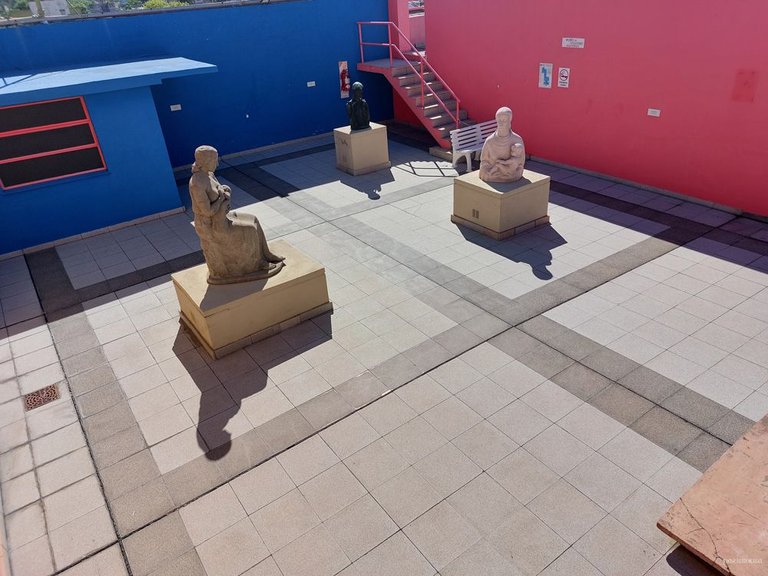
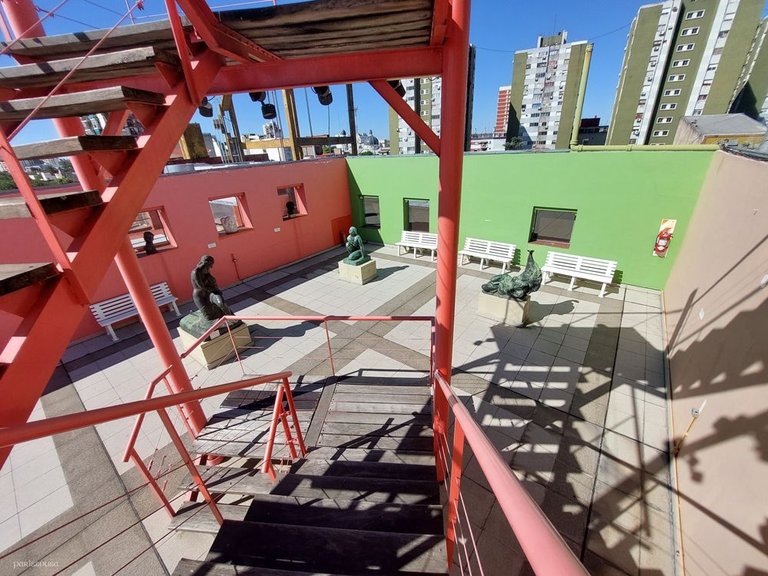
This is the La Boca neighborhood on the banks of the Riachuelo, seen from the windows of the museum house. I hope this has encouraged you to visit this wonderful museum. See you soon!
Este es el Barrio de La Boca a orillas del Riachuelo, visto desde las ventanas de la casa museo. Espero que esto los haya animado a visitar este maravilloso museo. ¡Hasta pronto!
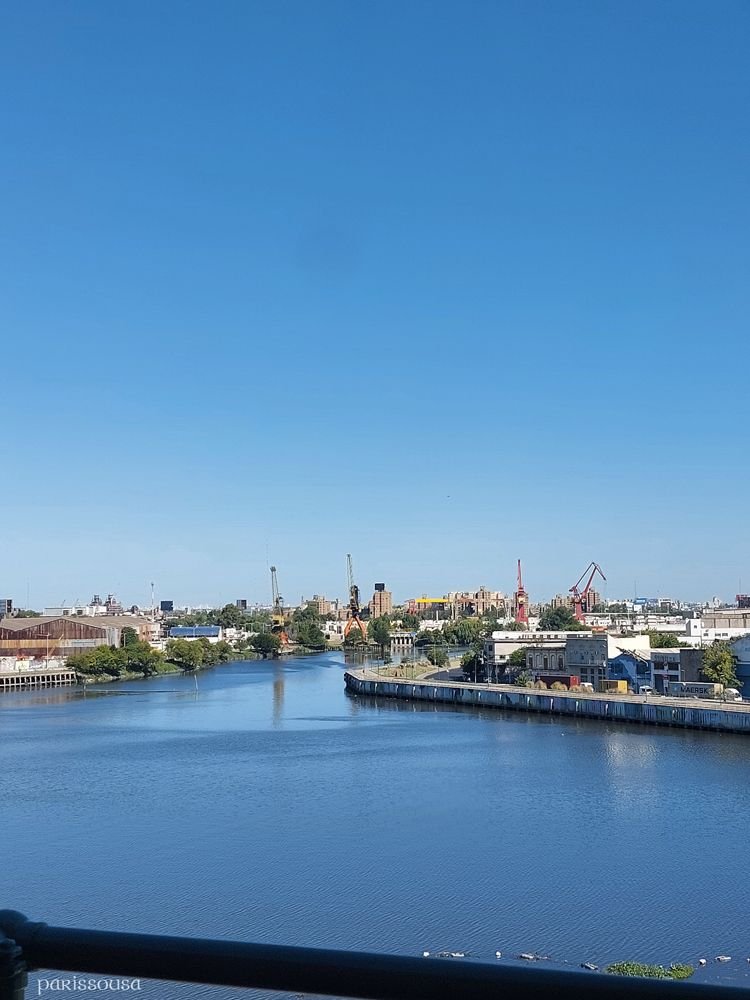

[//]:# ([//]:# (!worldmappin -34.63897 lat -58.36101 long d3scr))
Travel Digest #2467.
Become part of our travel community:
- Join our Discord
Hiya, @ybanezkim26 here, just swinging by to let you know that this post made it into our Honorable Mentions in Your post has been manually curated by the @worldmappin team. If you like what we're doing, please drop by to check out all the rest of today's great posts and consider supporting other authors like yourself and us so we can keep the project going!Thank you very much! It is very gratifying to receive a mention. It encourages me to continue publishing. Thanks again!
Nos alegra mucho de que así sea, es bien merecido y tu trabajo muy valioso. Gracias por sumar valor a la comunidad y compartir tus aventuras con nosotros. ❤️
You can check out this post and your own profile on the map. Be part of the Worldmappin Community and join our Discord Channel to get in touch with other travelers, ask questions or just be updated on our latest features.
¡Qué maestro, el Benito! No solo pintaba con espátula, sino que tenía su Orden del Tornillo. ¡O sea, un capo certificando locura con estilo! Ya me vi en su museo, con mi tornillo medio suelto también. 🤣
Thanks for your words. I think we all have a screw half loose!